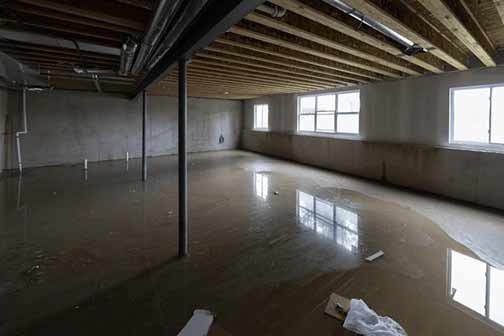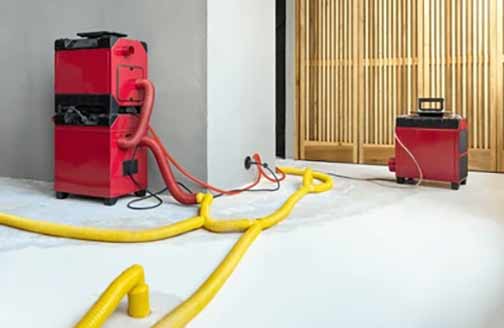
When you first discover that your basement has flooded, it is crucial to assess the severity of the situation. This initial evaluation will help you determine the appropriate actions to take and whether you need professional assistance. Start by observing the water level and the extent of the affected area. Is the water a few inches deep, or has it reached higher levels? Are there any signs of structural damage or potential hazards such as electrical outlets submerged in water?
Understanding the severity of the flooding will also help you gauge the potential damage to your belongings. If the water level is relatively low, you may be able to salvage some of your possessions. However, if the flooding is extensive, it is essential to prioritize safety and avoid unnecessary risks.
Ensuring Safety First
Safety should always be your top priority when dealing with a flooded basement. Before taking any action, ensure that the area is safe to enter. If the water level is high or if there are electrical hazards, it is best to wait for professional help. Here are some essential safety precautions to consider:
- Turn off the electricity: If it is safe to do so, turn off the electricity to the affected area to prevent the risk of electrocution. If you are unsure how to do this, contact an electrician for assistance.
- Wear protective gear: Equip yourself with rubber boots, gloves, and a mask to protect against potential contaminants in the water.
- Avoid direct contact with water: Floodwater can contain harmful bacteria, chemicals, and other contaminants. Minimize direct contact with the water to reduce the risk of infection or illness.
Identifying the Source of the Flooding
Once you have ensured your safety, the next step is to identify the source of the flooding. Understanding the cause of the water intrusion will help you determine the best course of action to stop the flow of water and prevent future occurrences. Common causes of basement flooding include:
- Heavy rainfall: Prolonged or intense rainfall can overwhelm drainage systems and lead to basement flooding.
- Plumbing issues: Burst pipes, leaking water heaters, or malfunctioning sump pumps can cause water to accumulate in your basement.
- Foundation cracks: Cracks in the foundation walls or floor can allow water to seep into your basement.
- Improper grading: Poorly graded landscaping can direct water towards your home, increasing the risk of basement flooding.
Once you have identified the source, take immediate steps to stop the flow of water if possible. For example, if a burst pipe is the cause, turn off the main water supply to your home.
Removing Water from the Basement
After addressing the source of the flooding, it is time to start removing the water from your basement. The method you choose will depend on the volume of water and the available resources. Here are some common techniques for water removal:
- Using a wet/dry vacuum: For minor flooding, a wet/dry vacuum can be an effective tool for removing water. Be sure to empty the vacuum frequently to maintain its efficiency.
- Using a sump pump: If you have a sump pump installed, ensure it is functioning correctly and use it to pump out the water. If the sump pump is not working, consider renting a portable pump from a hardware store.
- Manual removal: For small amounts of water, you can use buckets, mops, and towels to manually remove the water. This method is labor-intensive but can be effective for minor flooding.
It is essential to remove the water as quickly as possible to minimize damage and reduce the risk of mold growth.
Drying and Dehumidifying the Basement
Once the water has been removed, the next step is to thoroughly dry and dehumidify the basement. This process is crucial to prevent mold growth and further damage to your property. Here are some steps to effectively dry and dehumidify the area:
- Use fans: Position fans around the basement to promote air circulation and speed up the drying process. High-velocity fans are particularly effective for this purpose.
- Use dehumidifiers: Dehumidifiers help to remove excess moisture from the air, reducing the humidity levels in the basement. Place multiple dehumidifiers in the affected area for optimal results.
- Open windows and doors: If weather conditions permit, open windows and doors to allow fresh air to circulate and aid in the drying process.
- Remove wet materials: Remove any wet carpets, rugs, furniture, and other belongings from the basement to prevent mold growth and further damage.

Cleaning and Disinfecting the Basement
After the basement has been dried, it is essential to clean and disinfect the area to eliminate any contaminants and prevent mold growth. Follow these steps for effective cleaning and disinfection:
- Remove debris: Clear out any debris, mud, or dirt that may have been brought in by the floodwater.
- Clean surfaces: Use a mixture of water and mild detergent to clean all surfaces, including walls, floors, and furniture. Scrub thoroughly to remove any dirt and grime.
- Disinfect: Use a disinfectant solution to sanitize all surfaces and prevent the growth of mold and bacteria. Be sure to follow the manufacturer’s instructions for proper usage.
- Dispose of contaminated items: Properly dispose of any items that have been contaminated by the floodwater and cannot be salvaged.
Inspecting for Mold and Mildew
Mold and mildew can develop quickly in damp environments, so it is essential to inspect your basement for any signs of growth. Look for visible mold, a musty odor, or any discoloration on walls, floors, and belongings. If you detect mold, take immediate action to remove it:
- Use a mold removal solution: Apply a mold removal solution to the affected areas and scrub thoroughly. Be sure to wear protective gear, including gloves and a mask, to avoid exposure to mold spores.
- Contact a professional: If the mold infestation is extensive or if you are unsure how to handle it, consider consulting a professional mold remediation service.
Preventing Future Basement Flooding
After addressing the immediate aftermath of a basement flood, it is crucial to take steps to prevent future occurrences. Implementing preventative measures can help protect your home and belongings from water damage. Here are some strategies to consider:
- Install a sump pump: A sump pump can help to remove excess water from your basement and prevent flooding. Ensure that the pump is regularly maintained and functioning correctly.
- Seal foundation cracks: Inspect your foundation for any cracks and seal them with waterproofing materials to prevent water from seeping in.
- Improve drainage: Ensure that your home’s drainage system is functioning correctly. Clean gutters and downspouts regularly and consider installing French drains or other drainage solutions.
- Grade your landscape: Ensure that the landscaping around your home is properly graded to direct water away from the foundation.
- Install a backwater valve: A backwater valve can prevent sewage from backing up into your basement during heavy rainfall or sewer system overloads.
Documenting the Damage for Insurance Claims
In the aftermath of a basement flood, it is essential to document the damage for insurance purposes. Proper documentation can help you file a successful insurance claim and receive compensation for the damages. Follow these steps to document the damage effectively:
- Take photographs: Capture clear and detailed photographs of the affected areas, including any damaged belongings and structural damage.
- Make a list: Create a detailed inventory of all damaged items, including their approximate value and any receipts or proof of purchase.
- Keep records: Maintain records of all communication with your insurance company, including emails, phone calls, and any documentation you submit.
- Obtain estimates: Get estimates for repair and restoration costs from reputable contractors and include these in your insurance claim.

Seeking Professional Help
In some cases, dealing with a basement flood may require professional assistance. If the flooding is extensive, if there are significant structural damages, or if you are unsure how to handle the situation, it is best to seek help from professionals. Here are some types of professionals you may need to contact:
- Plumbers: If the flooding is due to a plumbing issue, a licensed plumber can help identify and fix the problem.
- Water damage restoration specialists: These professionals have the expertise and equipment to effectively remove water, dry, and restore your basement.
- Mold remediation experts: If mold is present, mold remediation experts can safely remove the mold and prevent future growth.
- Electricians: If there are electrical hazards, an electrician can ensure that the area is safe and make any necessary repairs.
Creating an Emergency Plan
Having an emergency plan in place can help you respond quickly and effectively in the event of future basement flooding. Your emergency plan should include the following elements:
- Contact information: Keep a list of emergency contacts, including plumbers, electricians, and water damage restoration specialists.
- Shut-off instructions: Ensure that all household members know how to turn off the main water supply and electricity in case of an emergency.
- Evacuation plan: Develop a plan for safely evacuating your home if the flooding is severe and poses a risk to your safety.
- Emergency kit: Prepare an emergency kit with essential supplies, such as flashlights, batteries, first aid supplies, and important documents.
Summing It Up
Dealing with a flooded basement can be a stressful and challenging experience, but taking immediate and effective action can help mitigate the damage and ensure the safety of your home and family. By understanding the severity of the flooding, ensuring safety, identifying the source, removing water, drying and dehumidifying, cleaning and disinfecting, inspecting for mold, preventing future flooding, documenting the damage, seeking professional help, and creating an emergency plan, you can effectively manage the situation and protect your property from further harm.
Remember, safety should always be your top priority, and don’t hesitate to seek professional assistance if needed!

